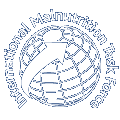
Find below a list of books and guides on the management of acute malnutrition.
If you know of other books and guides that are not listed here, please email us the details.
Inpatient management of severe malnutrition
Several manuals and guides are available on the WHO website Severe Malnutrition section
WHO growth standards and the identification of severe acute malnutrition in infants and children
This joint statement by WHO and UNICEF presents the recommended cut-offs, rationale for those cut-offs and advocates for their harmonized application in the
identification of 6–60 month old infants and children for the management of severe acute malnutrition (SAM). The implications of these recommendations on patient load, discharge criteria and on programme planning and monitoring have also been reviewed.
The document is available here
Caring for severely malnourished children, by Ashworth & Burgess (2003)
82 page book based on WHO guidelines, written for nurses and other health professional working in resource-poor settings. Sets out the 10 steps of routine care and briefly explains the rationale for each one and explains how to involve mothers in care. Updated 2008 to include community-based management and antibiotics in HIV. Available in English from TALC
Guidelines for the inpatient treatment of severely malnourished children, by Ashworth, Khanum, Jackson & Schofield, WHO, 2003
48 page book that contains practical 10-step treatment guidelines. Download
Management of severe malnutrition: a manual for physicians and other senior health workers, by WHO 1999
60 page manual of internationally agreed guidelines on the inpatient management of SAM in young children (and briefly in adults and adolescents) for health staff working at central and district levels. Download through this link
Management of the child with a serious infection or severe malnutrition, by WHO-IMCI (2000)
Guidelines for senior health staff responsible for the care of young children at the first referral level in developing countries, which contains a 20 page chapter on severe malnutrition. Available in English, French and Russian
The pocketbook of hospital care for children: Guidelines for the management of common illnesses with limited resources, by WHO (2005)
Pocket book for use by doctors, senior nurses and other senior health workers who are responsible for the care of young children at the first referral level in developing countries. Available in English , French , Portuguese and Russian
Serious childhood problems in countries with limited resources
The background book “Serious childhood problems in countries with limited resources” presents a summary of the technical background and the evidence-base underlying the clinical guidelines given in the manual for the management of children with severe infections or acute malnutrition. Full details can be downloaded from WHO
Community-based Management of Acute Malnutrition (CMAM)
Emergency Nutrition Network Special Supplement Community Based Therapeutic Care
This supplement compiled and edited by Tanya Khara and Steve Collins, Valid International is a collection of articles by people involved in CTC. Download
Community-based therapeutic care field manual, by Valid International and Concern Worldwide (2006)
A 247 page manual for programme managers, practitioners and technical specialists implementing community-based therapeutic care programmes to address severe acute malnutrition. Available in English through this link
Community based Therapeutic Care Inter-Agency meeting
The presentations from a CTC inter-agency meeting held in Washington DC in 2005 between implementing agencies, academics and donors. The aims for the meeting were (1) to learn from current CTC field experience to identify issues and challenges in implementation, scale up, and transitioning; and (2) to establish cross-agency mechanisms for improving and ensuring the quality of CTC implementation. The reports can be downloaded through FANTA-2 website
Training guide for Community-based Management of Acute Malnutrition
The training guide is designed for health care managers and health care providers who manage, supervise and implement CMAM. This includes health care providers who are involved in health outreach activities, as well as MOH officials at the national, regional and district levels, health and nutrition program managers of NGOs and United Nations technical staff.
Click on this link to access this tool.
Community-based Approaches to Managing Acute Malnutrition
This document is the Emergency Nutrition Network report of the proceedings of CTC workshop held in Dublin in October 2003. Download through this link
Emergency Nutrition
Tool kit for addressing nutrition in emergency situations
A Toolkit for Addressing Nutrition in Emergency Situations has been developed by Global Nutrition Cluster/UNICEF. This toolkit covers areas such as Infant and Young Child Feeding in Emergencies, Management of Moderate Acute Malnutrition, Treatment of diarrhoea with ORT/Zinc, Nutrition, HIV and AIDS, and other important areas. Use the link below to access this toolkit
Module 1 Infant Feeding in Emergencies
This resource was prepared through an interagency colloboration between UNICEF, WHO,Linkages, IBFAN and ENN to prepare emergency staff to safeguard maternal and child health and is appropriate for people who support mothers and children in emergency. Click this link for full details.
Module 2 Infant Feeding in Emergencies
Module 2 comprises four parts – a core manual, additional material (including sections on artificial feeding and management of acute malnutrition in infants under six months), annexes and slides content. It aims to provide those directly involved with infants and carers with the basic knowledge and skills to support safe and appropriate infant and young child feeding. Follow the link for full details.
Make it Happen. Report of a regional workshop on IFE
ENN has posted the report of a regional workshop on IFE held in Bali, 10-13 March, 2008. The workshop was organised by ENN/IFE Core Group, in collaboration with UNICEF NY, UNICEF regional offices, UNICEF Indonesia, and MOH Indonesia. Click this link for full report
Media Guide on Infant and Young Child Feeding in Emergencies – English
This guide outlines how the media can help protect and support appropriate and safe infant and young child feeding in emergencies. Click here for the guide.
Operational Guidance on Infant and Young Child Feeding in Emergencies, v2.1
This document produced by ENN and endorced by many agencies, organisations and donors provides concise practical but mainly non technical guidance on how to ensure appropriate infant and young child feeding in emergencies. Full details can be downloaded
here
Other Links
SMART: Operationalizing the Standardized Monitoring and Assessment in Relief and Transitions methodolgy by resolving outstanding technical issues or identify a process to resolve these issues in the SMART methodology; clarifying sections of the manual identified by users as unclear or incomplete; determining revisions needed to the Emergency Nutrition Assessment (ENA of NutriSurvey) software that accompanies the SMART manual; and to identify a way forward in developing a consolidated and standardized set of training materials. click here for project summary
MAMI Project: Development of Best Practice Interim Guidelines providing guidance on the management of acute malnutrition in infants under 6 months.This is a collaborative effort between the Emergency Nutrition Network (ENN), The Centre for International Health and Development (CIHD) at UCL, London and Action Contre la Faim, and is funded by the Nutrition Cluster
